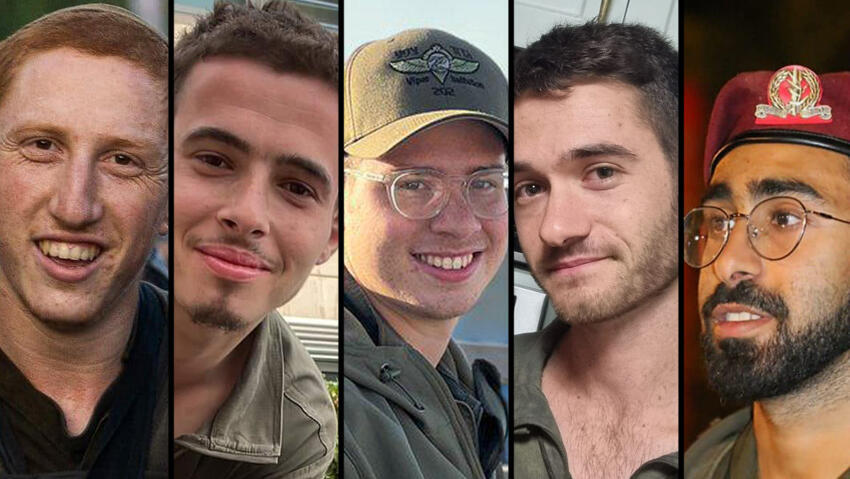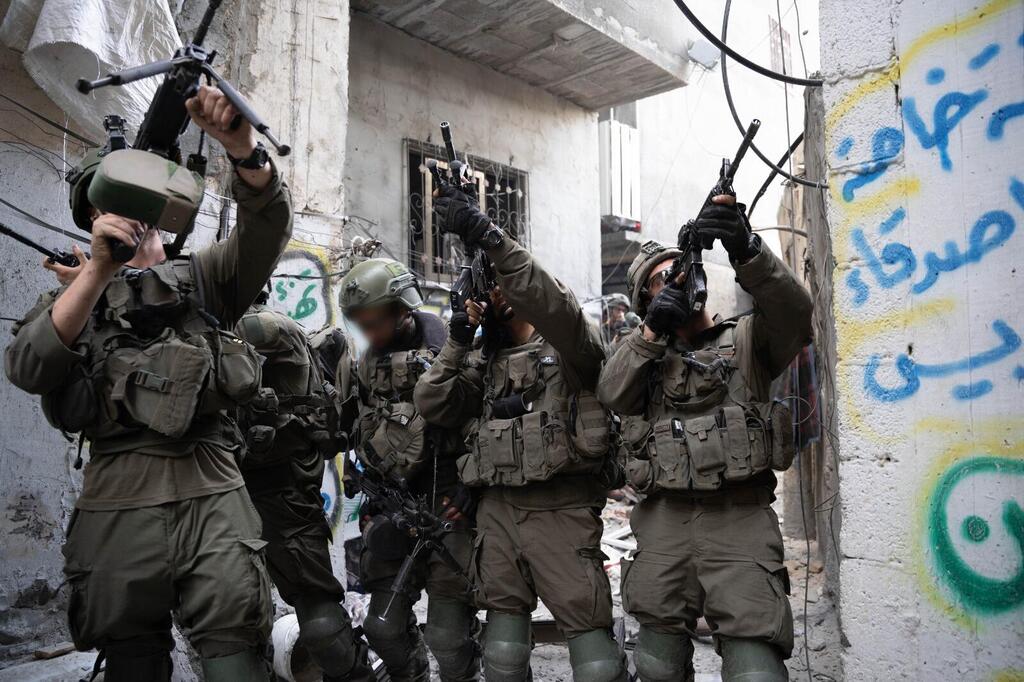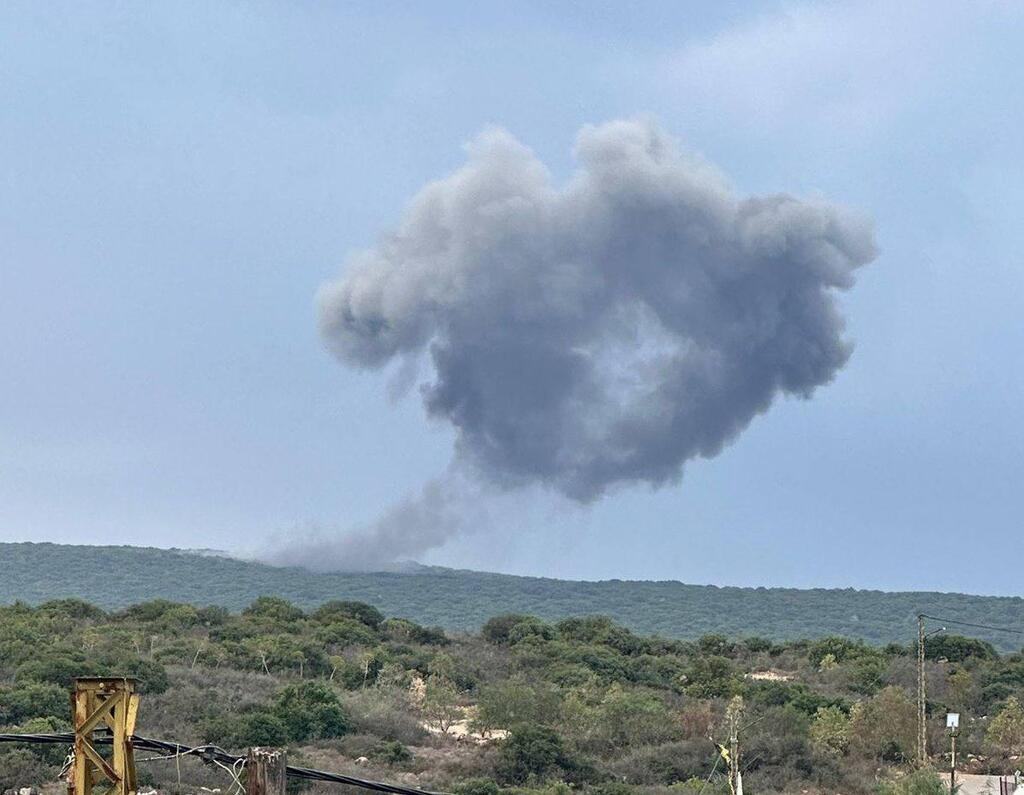Getting your Trinity Audio player ready...
The battles in the Jabaliya refugee camp over the past two weeks serve as a condensed model of the entire war with Hamas, encapsulating all its complexities. Lessons from these battles can guide Israel in retrieving captives and dismantling Hamas' rule. While Hamas can be destroyed, it must be done gradually.
The public must understand that this war is unlike any Israel has faced before. An IDF senior commander, who has been fighting Hamas for months, said that the IDF needs to return to previously operated areas to diminish Hamas' greatest asset: its extensive network of underground tunnels. These tunnels allow Hamas terrorists to move from Gaza City to Rafah, continuing to pose a threat to Israel.
5 View gallery
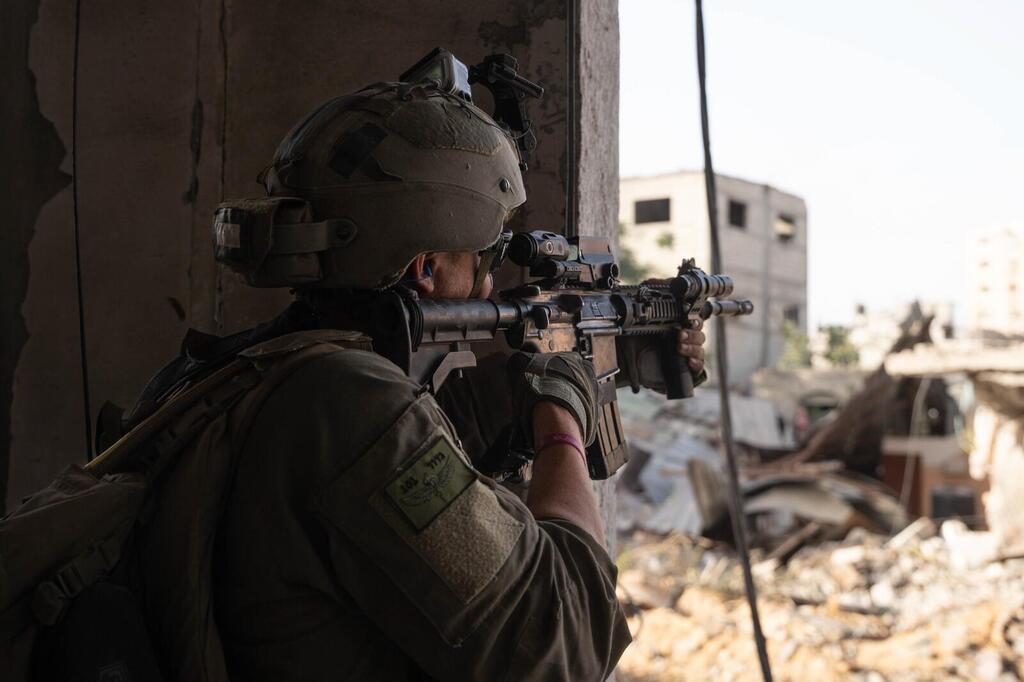

IDF revisits former battlegrounds to destroy tunnels
(Photo: IDF Spokesperson's Unit)
There are around 100,000-150,000 residents in the Jabaliya refugee camp. Two divisions entered it two weeks ago under the command of the 98th Brigade, led by Brigadier General Dan Goldfuss. The IDF did not enter the camp because there were civilians who refused to evacuate. It only entered the city of Jabaliya and its surroundings. After the IDF left the area, the market opened, and tens of thousands of residents were seen in the streets while Hamas kept the peace and exercised governance.
The decision to attack and take control of the re-established eastern Jabaliya battalion of Hamas was driven by two key reasons. First, the western Negev and its residents cannot feel secure as long as around 1,000 terrorists are hiding in the camp and its tunnels, armed with weapons and rocket launchers.
Second, the IDF possessed qualitative intelligence on the tunnel network under the refugee camp and the hideouts of the operatives. This intelligence suggested that the hostages' bodies were underground.
Brigadier General Goldfuss planned the operation based on lessons learned from the extended battle in Khan Younis. The first step was to form a special intelligence team comprising both IDF and Shin Bet special intelligence units. Through inter-agency cooperation, the force reached its objective and discovered the bodies of four hostages in Gaza.
After five days of intense fighting, BG Goldfuss' team managed to control the territory and penetrate the depths of the tunnels. However, it took two weeks for the combat teams and the Engineering Corps to dismantle Hamas' eastern Jabaliya Battalion. According to Intelligence Directorate estimates, this battalion included about 1,000 local operatives and others who had gathered in the camp after fleeing other locations.
Roughly 500 operatives were killed or captured, while the rest fled into the tunnels. Meanwhile, the IDF recovered the bodies of hostages Orion Hernandez, Michel Nisenbaum and Hanan Yablonka, which were returned to Israel on Friday. The IDF continues to destroy tunnels under the camp.
The eastern Jabaliya battalion was well-prepared. It rigged narrow alley walls and tunnel shafts, and fired 120 anti-tank missiles at the IDF. The IDF lost seven soldiers, five of them in friendly fire incidents. Most of the losses were from the Paratroopers Brigade, whose soldiers played a decisive role in battle.
Tanks and the Air Force supported the infantry but had to exercise extreme caution not to harm the paratroopers moving between houses, dealing with the terrorists barricaded on the upper floors.
Until the next raid
The primary challenge for the IDF in the Gaza Strip has been, and to some extent still is, that above-ground progress is much faster than underground. Previously, underground operations slowed down and hindered the entire mission. However, the IDF has learned from its experiences in Khan Younis, now enabling faster actions in the tunnels.
Neutralizing Hamas' underground capabilities is crucial to weakening both its military and potentially its civilian efforts. To achieve this, the IDF must address several issues: First, they need to release captives in the tunnels who may be harmed during operations. Second, high-quality and precise intelligence is essential. Third, IDF soldiers must apply the lessons learned in Khan Younis, including identifying IEDs, approaching traps, and navigating narrow alleys without being harmed by IEDs or RPG traps.
The IDF can learn from its war experiences and remain dynamic throughout this conflict by engaging in large, recurring operations as needed. Future operations will look different from those conducted so far.
The IDF's main military goal is to destroy at least 65%-70% of Hamas' strategic tunnels, including those leading to Egypt for supplies and escape routes. This will make Hamas more dependent on international aid for food, medicine and other supplies for the Gazan population.
According to a Wall Street Journal report, American intelligence estimates that the IDF has only destroyed 35% of Hamas' combat force and even less of its tunnel capabilities. However, IDF intelligence disputes these figures. Of the 30,000 Hamas operatives before October 7, the IDF has eliminated or captured more than 14,000. While Hamas is recruiting new fighters, these numbers are insignificant, with many recruits being untrained and often lacking motivation.
Estimates suggest there are still about 50 escape tunnels under the Gaza-Egypt border, which the IDF's progress in Rafah is addressing. Nonetheless, the IDF must approach this issue cautiously and in coordination with Egypt.
Launching rockets before the IDF arrives
There is still an arsenal of rockets in Rafah, as evidenced by rocket fire felt by Israeli residents on Sunday. Hamas' surprise rocket barrage aimed to penetrate air defenses, causing damage or casualties deep within Israeli territory. Although unsuccessful, Hamas considers the attack itself an important achievement in its war of perception, supposedly dealing a moral blow to the Israeli public.
Additionally, launching a relatively long-range missile barrage is intended to show the Israeli public that Hamas remains resilient after almost eight months of fighting, suggesting there is no point in attempting to topple it militarily.
Lastly, Hamas wants to use the rocket launchers and arms depots at its disposal in Rafah as the IDF solidifies its hold over growing swaths of Gaza's southernmost city.
First and foremost, releasing the captives
All of the above should lead Prime Minister Benjamin Netanyahu to conclude that weakening Hamas in Gaza is imperative, as its ability to recover and regroup still poses an immediate danger to the residents of the western Negev and Israel as a whole. However, it is equally crucial not to abandon the ultimate military goal of releasing the captives. The IDF's achievements in dismantling Hamas's military power make this goal attainable, and the State of Israel must prioritize the release of the captives.
5 View gallery
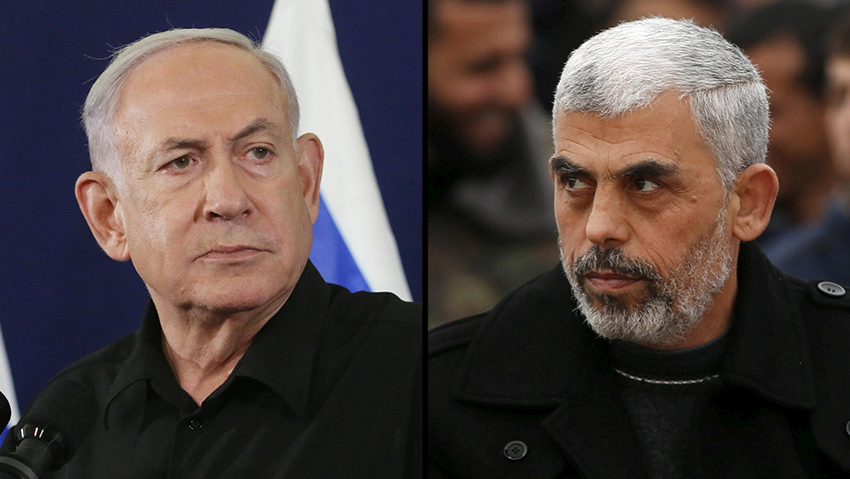

Prime Minister Benjamin Netanyahu and Hamas leader in Gaza Yahya Sinwar
(Photo: Dana Kopel, Reuters)
Achieving both objectives simultaneously is feasible, but it requires a change in the war strategy. Instead of aiming to accomplish everything in one fell swoop, the IDF should adopt a phased plan. Similar to its approach during the Second Intifada, the IDF should deploy forces for pinpoint operations of varying scopes whenever a need is identified or if Hamas provokes action.
Priority should be given to negotiating a hostage deal, and if necessary, committing to a cease-fire for a relatively long period to facilitate this. The negotiation team must maintain maximum flexibility to reach a deal, even through a cease-fire. This should be achieved through intense diplomatic and intelligence efforts, which will also provide an opportunity to formulate a post-conflict plan with the Americans.
The diplomatic effort should focus on exerting international pressure on Hamas. The goal is to ensure that all relevant countries, starting with the U.S., followed by Western Europe, and including Qatar, make it clear to Hamas that no financial aid for the reconstruction of Gaza will be provided unless all captives, both soldiers and civilians, are released. If Qatar agrees to this, and with American involvement through the United Nations, a different reality could be created.
The intelligence effort at this time is essential not only for releasing the captives but also to ensure that Hamas does not rebuild its military power and regain control of the Strip. This is also the goal of the international monitoring force that the U.S. is likely to establish with the Gulf states to manage Gazan affairs.
A cease-fire would allow for a concentrated effort to end the northern conflict against Hezbollah, either through a focused military operation in southern Lebanon or as a result of a successful diplomatic effort led by the U.S., France, Saudi Arabia and Egypt.
It is important to remember that the fighting must not stop and may even need to be intensified in the coming days until Hamas agrees to the hostage deal. Strengthening and expanding the war to additional areas in Gaza will apply significant pressure on Hamas, as long as it is done without causing setbacks to Israel's international efforts.
It's not easy, but it's possible. A phased plan for the release of captives and the weakening of Hamas in Gaza is likely the next step, provided there is a government in Jerusalem capable of making the right decisions and avoiding careless actions and statements. If you will it, it is no dream.



